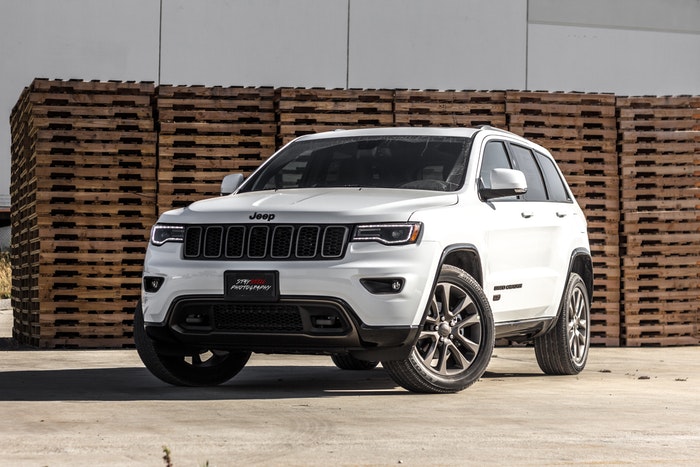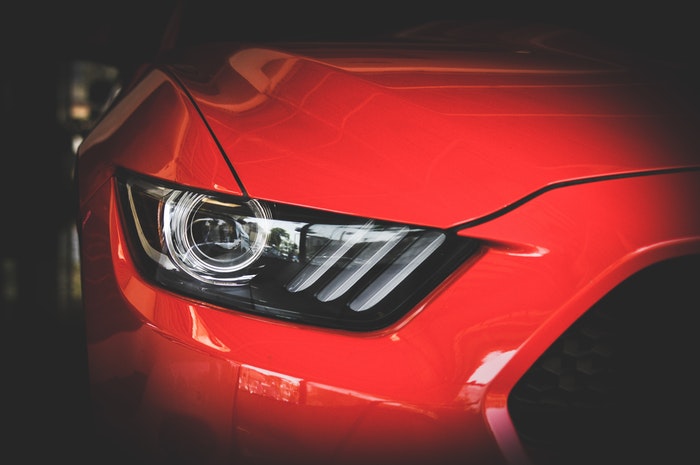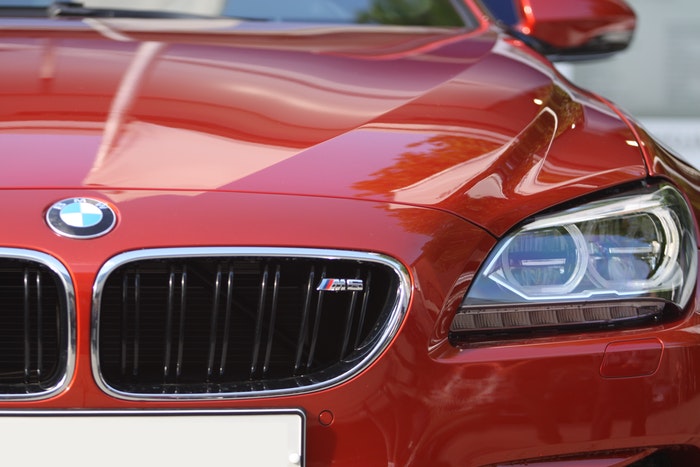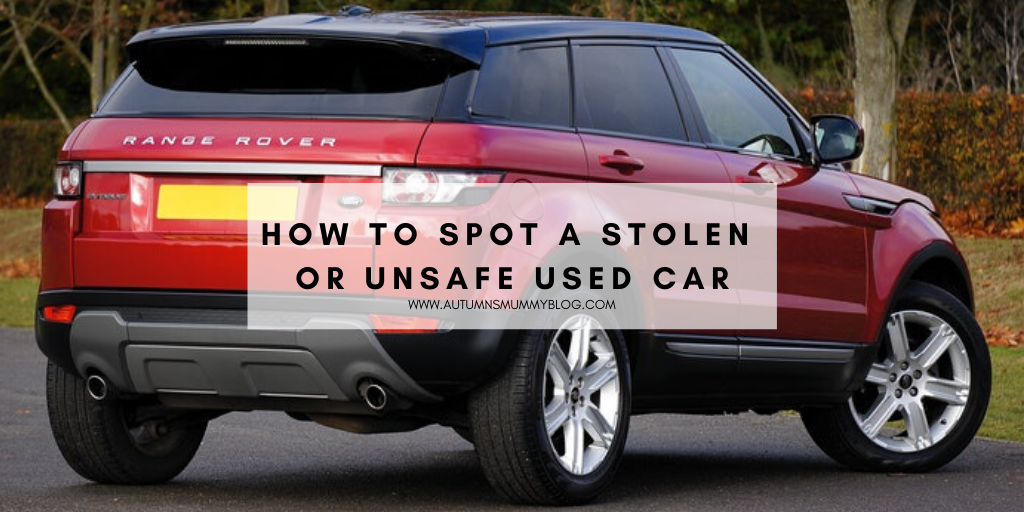Collaborative Post¦ Car purchases can be one of the biggest expenses that you deal with, even when buying second hand. You could be spending hundreds or thousands on buying a car, so you need to make sure you’re buying something reliable. Buying a car from a dealership is often the best way to go, but you can be tempted by some great deals from people selling their car privately. It can be an easy way to buy the car you need, especially if you’re looking for an affordable price. However, it certainly won’t end up being as affordable as you thought if it turns out the car is stolen.
If you don’t know something is stolen when you buy it, you shouldn’t get into any legal trouble. But even though you won’t be in hot water with the police, you could still end up dealing with a range of other problems. If you suspect a car is stolen after buying it, you will need to report it to the police. The police can seize it, and lenders can even still demand payment if you bought the car on finance. You will also be out of pocket, without a car and, although you can ask the seller for a refund or claim money back if you used a credit or debit card, you may not recover your money. A court claim is also possible, but could be costly.
Therefore, it’s best to try and avoid buying a stolen car as much as possible. Fortunately, there are plenty of things that you can look for to check that you’re not buying a vehicle that has been stolen or has been tampered with in any way.

Image from Pexels – Pexels License
Ask to See Original Documents
Paperwork is always important when you’re buying a car. The paperwork should show you who the vehicle belongs to, its history and its registration. When you’re looking at a car that you’re thinking of buying, you should always ask to see an original copy of the V5C registration document, also called the logbook. You should check that it bears the DVLA watermark to ensure it’s an official document. The address in the logbook should match the seller’s address, and you can ask to see their driver’s licence or a utility bill to check it.
If the vehicle is stolen, the seller may try to sell it without a logbook. This is a common tactic, and the seller might claim that the logbook has been sent to the DVLA to be updated. However, you should avoid buying a car without a logbook as it’s a good indication that the car might be stolen.
Check the Numberplate and VIN
When you’re looking at the logbook for the car, check that the number plate and the Vehicle Identification Number (VIN) match those written in the book. You can also use the licence plate number to check some important information about the car, such as its tax status and insurance. You can use the DVLA search online or some other services that will help you to find this information. For more on checking the VIN, see the section below about vehicle ringing. Ringing a vehicle involves replacing the VIN, so you should know what to look out for.
Check the Mileage
A stolen car may be tampered with by having its odometer rolled back so that it shows a lower mileage. This is known as a clocked vehicle, and the technique could be used to get you to pay more and to buy a car that has more wear and tear than you first thought. Fortunately, there are ways for you to check if the numbers have been changed. You can check it against the MOT history of the car and the car’s service history. The gov.uk website in the UK can show you MOT information for a car, although in other countries it may be even easier to check odometer information online. https://www.autoverleden.nl/ shows you the relevant information for cars in the Netherlands. It can also show you import information and other car history details.
Carry Out a Vehicle Check
As well as getting free information about a vehicle by checking online, you can also pay to have a full vehicle check carried out. It can cost a small amount to do so, but it’s not too much if you only want to check up on one car. You can choose which service you want to use, and there are usually different types of reports to choose from. If you want to save some money, you can select a less detailed report. You can also often choose services that allow you to check several vehicles, which can help you to save money.

Image from Pexels – Pexels License
Look Out for Cloned Vehicles
Cloned vehicles are those that have incorrect number plates, which belong to an identical model. The vehicle itself won’t necessarily be stolen, as some people use fake number plates to avoid speeding fines or other problems where they could be identified. To avoid buying a cloned car, you can check the licence plate number against the logbook. Make sure the VIN also matches and check for any signs that the number plates have been damaged. Vehicle checks might also help to provide information that will help you to determine if you have the right car, providing you with details such as the trim colour of the vehicle that matches the plates.
Spotting Ringers
A ringer is a stolen vehicle with identification numbers from another, written-off car. The VIN is replaced and the seller supplies fake documentation. Checking the VIN on the car can help you to see whether it has been tampered with. You can find it under the bonnet and on the vehicle’s chassis by the front seat. You can also sometimes find it in the door pillar at the base of the windscreen. If you want to avoid buying a ringer, check that the logbook is genuine and that it features that DVLA watermark. Carefully check all paperwork to be sure that everything is correct and matches the car.

Image from Pexels – CC0 License
Examine for Signs of “Cut and Shuts”
A cut and shut is a vehicle that is made from several cars being welded together. Whether these are created from stolen vehicles or not, they can be very unsafe due to a lack of structural integrity. It might not be immediately obvious if you come across one of these vehicles, but there are some signs that you can look for to spot them. Look for signs of welding around the middle of the vehicle, as well as the windscreen pillars. Paint and colours that don’t match can also indicate that two cars have been poorly put together, while paint where it wouldn’t normally be can also indicate a problem. Checking the background of the vehicle will also help you determine if it has been stolen or written off.
Check That the Vehicle Exists
While it might not technically be a stolen car, another problem you might experience is a car not existing at all. This is a common scam online, which you should be aware of. One of the best things to do to avoid this problem is to refuse to send any money for a vehicle you have yet to see in person. It’s always best to see a car in person before buying it so you can examine it and make sure it’s real.
A stolen car can leave you out of pocket and without a car too, while an unsafe car can put you in danger. Before making a purchase, make sure you thoroughly check the background and condition of a car.
Disclosure: This is a collaborative post.
